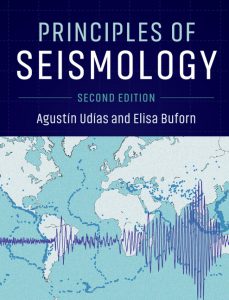Principles of seismology
AUTHOR : Udias Vallina, Agustin
CALL NO : QE534.3 U21p 2018
IMPRINT : Cambridge : Cambridge University Press, c2018
The second edition of Principles of Seismology has been extensively revised and updated to present a modern approach to observation seismology and the theory behind digital seismograms. It includes: a new chapter on Earthquakes, Earth’s structure and dynamics; a considerably revised chapter on instrumentation, with new material on processing of modern digital seismograms and a list of website hosting data and seismological software; and 100 end-of-chapter problems. The fundamental physical concepts on which seismic theory is based are explained in full detail with step-by-step development of the mathematical derivations, demonstrating the relationship between motions recorded in digital seismograms and the mechanics of deformable bodies. With chapter introductions and summaries, numerous examples, newly drafted illustrations and new color figures, and an updated bibliography and reference list, this intermediate-level textbook is designed to help students develop the skills to tackle real research problems.
- The content has been updated and reorganized – practical aspects of seismology have been incorporated, including new developments in methodologies and new results and applications to the study of earthquakes and the Earth’s structure
- Includes a new chapter on the analysis of the digital data – practically all analyses of seismological data are made using seismograms obtained from free data-banks, yet none of the existing texts covers this topic
- Has a wealth of worked examples and end-of-chapters problems, including computational exercises that can be solved by using the most recent and widespread codes and softwares, such as SAC, GMT, and PYTHON
- Online ancillaries are available, including figures in electronic format, solutions to selected problems, program codes and data for computational exercises




